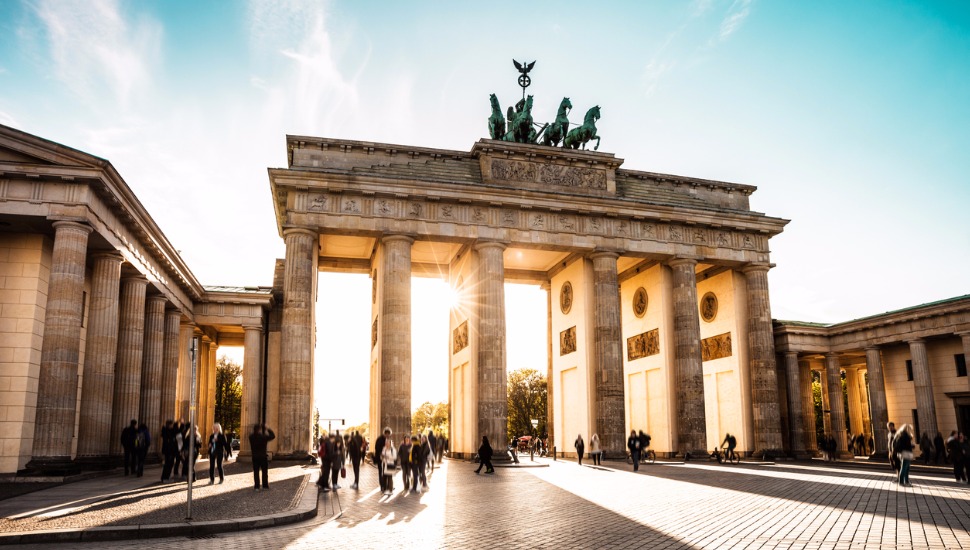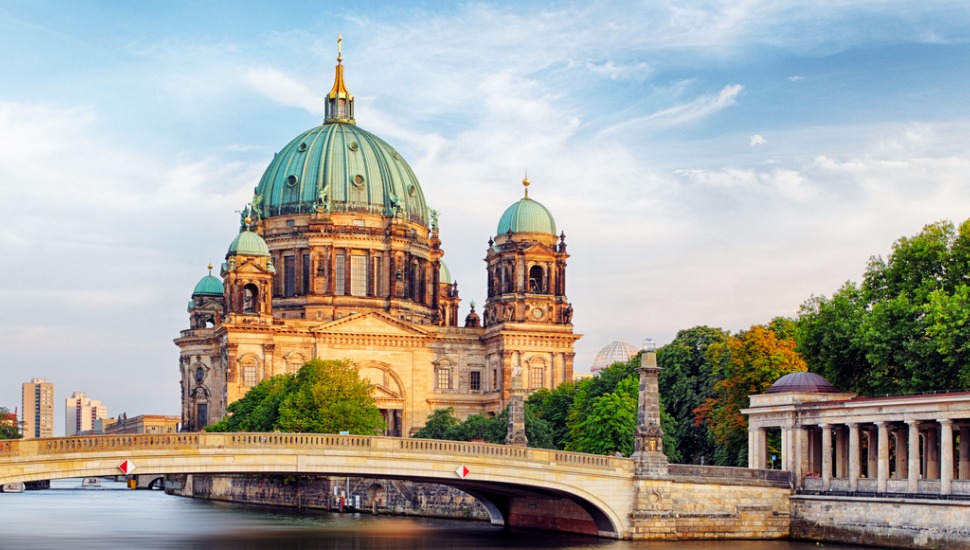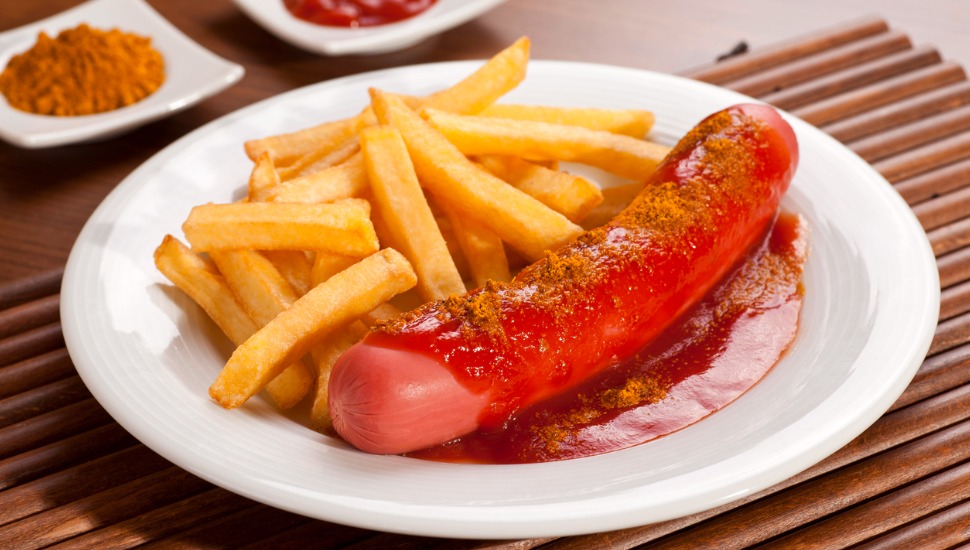Berlin: Germany's Edgy, Cosmopolitan Capital - Our Guide
Moody, vibrant, bohemian and steeped in some rather dark history, Berlin regained its crown as German capital in 1990 after the fall of the Berlin Wall. In recent decades it has become a Mecca for artists and free spirits - and even more recently for forward-looking start-ups. For travellers seeking an unconventional, unpretentious capital city with a fascinating history and a 24-hour party culture, Berlin is sure to delight.
Much of the city's chequered history can be viewed in its architecture: bullet-pocked tenements and museums, brutalist Soviet tower blocks and shiny temples to consumerism - they all exist side-by-side in a strange harmony.
A Brief History
The historic grand palaces, cathedrals, universities and museums of Berlin were mostly built during the reigns of the various kings and king-emperors named either Friedrich or Friedrich Wilhelm, the most famous of all being Friedrich the Great. The city suffered greatly in the two World Wars, the latter of which saw many grand old buildings obliterated - first by Allied and then by Russian area bombing. After the war, Berlin was split in two, with the east falling under the Communist Eastern Bloc and the West being controlled by the US, UK and France. The wall dividing the two areas came down in 1989, marking the beginning of the reunification of Germany.
Airports: Schönefeld or Tegel
Schönefeld Airport in the south is home to (mostly) low-cost carriers. Reach the city centre by S-Bahn (underground system) or a faster regional train. If you arrive in Tegel to the north, you can hop on a bus into the city centre. Taxis are of course available from both airports.
Getting Around
Two transport systems developed when the country was split in two, which have merged since reunification. The centrepiece of the city's public transport system is the S-Bahn, a network with 15 lines covering 330km of rail, stopping at 170 stations. Look out for the green-and-white S symbol. A day ticket covering all zones costs 7.70 euro - which compared to a 1-6 zone ticket in London (£12.60/14 euro off-peak) - is a great deal. The day ticket also covers travel on the buses to and from Tegel airport, regular city buses, trams, regional trains and U-Bahn. The U-Bahn is the city's main underground system, which compliments the S-Bahn, but unlike its more recent counterpart does not stretch into the suburbs.
Things to See and Do
Brandenburg Gate

Arguably the most iconic of Berlin's sites, the Brandenburg Gate should feature on your hit-list. Constructed when Berlin was the capital of Prussia - the pre-eminent German state before Germany was born in 1871 - the Gate was designed as an arch of peace, crowned by a majestic four-horse chariot.
Holocaust Memorial
Located to the south of the Brandenburg Gate is the Memorial to the Murdered Jews of Europe, or the Holocaust Memorial. Concrete slabs are arranged over a 20,000 square metre space. Approximately six million Jews died in the Holocaust, and 17 million overall. The Nazis ordered the deportation and eventual murder of Jews, Roma, ethnic Poles, Slavs, Soviet citizens, gay men, Jehovah's Witnesses and other minorities.
Reichstag
A short walk to the north of the Brandenburg Gate is the Reichstag, built after the unification of German states in 1871. Today, having survived two world wars, the Reichstag remains the seat of the German Parliament. Atop the modern day structure is a vast glass dome, which can be visited day or night - but you must register by email first. You can register here.
Museum Island
Home to no less than five museums, Museum island is located in the River Spree. With a single ticket you can explore Pergamonmuseum (Pergamon Museum); Bode-Museum; Neues Museum (New Museum); Alte Nationalgalerie (Old National Gallery); and Altes Museum (Old Museum). The regular price is 18 euro, with concessions entering for 9 euro and under-18s getting in free!
Checkpoint Charlie
Checkpoint Charlie was a border crossing between East and West Berlin, so-called after the military-designated 'Checkpoint C'. The checkpoint was the scene of much Cold War drama, not least of which was the stand-off between Soviet and U.S. tanks in October 1961, which ended peacefully. Nearby there are five museums connected with Charlie, the Wall and the Cold War: Mauer Museum - Haus am Checkpoint Charlie; Cold War BlackBox; asisi Panorama Berlin; The Wall; and Trabi Museum and Trabi World.
Berlin Cathedral
The Berlin Cathedral - or Berliner Dom - is one of the city's most striking churches. Climb the 270 steps to the observation deck and enjoy views across the city.
Squares of Berlin

Berlin is home to numerous public squares - or platz - which are ideal for shopping, dining or simply people watching.
Bebelplatz & Humboldt University
Bebelplatz is home to the grandiose Humboldt University - the oldest of Berlin's universities. Originally the Friedrich Wilhelm University, it closed in 1945 and reopened as the Humboldt University of Berlin in 1949 under Eastern Bloc rule.
Alexanderplatz
Step back in time and enjoy - if enjoy be the word - an array of buildings constructed in the Soviet style.
Fernsehturm Berlin - TV tower
Close to Alexanderplatz, the iconic Fernsehturm TV tower rises 368m above the city. Built in the 1960s as a symbol of Communist power - and of Berlin - these days it remains an icon of the latter. Its optimistic, slightly kitschy appearance is in stark contrast with the austere lives lived by most people in the GDR before the Berlin Wall came down.
Berlin Food

As a truly cosmopolitan city, Berlin is home to some exciting international cuisine, as well as plenty of hearty German fare. Try the famous Wiener Schnitzel (breaded, pan-fried veal); or what is reputed to be the best döner kebab in the world at Mustafas Gemüsedöner. Currywurst (sausage) and Pomme (chips) is also a must - visit Curry 36 in West Berlin for this. For something that doesn't involve lots of meat, sample some Käsespätzle - a kind of supercharged macaroni cheese. Whichever meal you choose, wash it down with a glass or two of ice-cold Erdinger or Berliner Kindl.
Night life
Few cities match Berlin for unrelenting night life. From hard-to-get-in wasteland superclub to tiny basement drinking holes, Berlin has a night spot for every musical taste and every pocket. For techno try the vast Berghain - if you can get past the surly bouncers; for punk rock visit SO36 - where Iggy Pop and David Bowie were often seen.
Accommodation
Berlin caters to every budget, with dorm beds in hostels for 15 euro a night, right up to palatial 5-star hotels with every comfort you could imagine.
Costs
For many years, Berlin was popular among poorly-financed artists and bohemians, largely because it was so undesirable that the rents were rock-bottom. In the decades since reunification, the city has grown in wealth and living costs has risen accordingly. That said, accommodation and general living costs are still noticeably lower than London and Paris.
Get a Quote